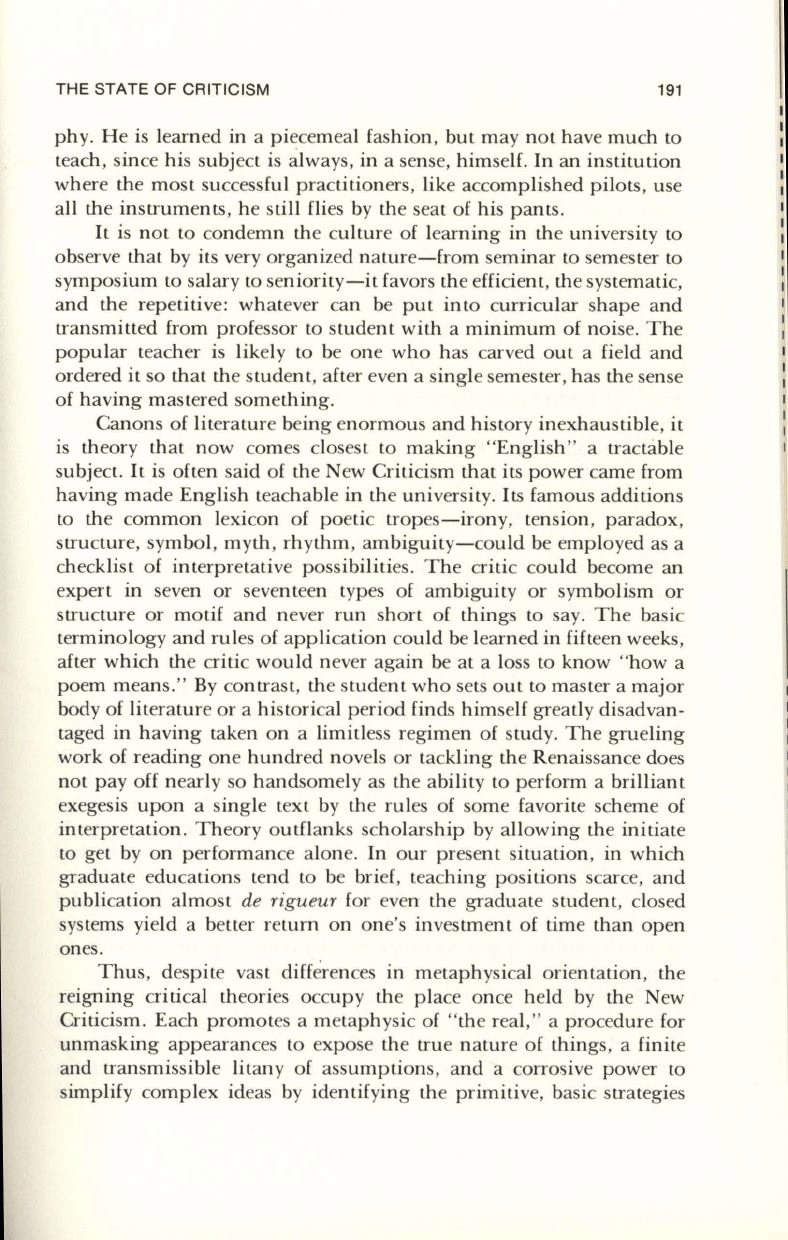
THE STATE OF CRITICISM
191
phy. He is learned in a piecemeal fashion, but may not have much to
teach, since his subject is always, in a sense, himself. In an institution
where the most successful practitioners, like accomplished pilots, use
all the instruments, he still flies by the seat of his pants.
It
is not to condemn the culture of learning in the university to
observe that by its very organized nature-from seminar to semester to
symposium to salary to seniority-it favors the efficient, the systematic,
and the repetitive: whatever can be put into curricular shape and
transmitted from professor to student with a minimum of noise. The
popular teacher is likely to be one who has carved out a field and
ordered it so that the student, after even a single semester, has the sense
of having mastered something.
Canons of literature being enormous and history inexhaustible, it
is theory that now comes closest to making "English" a tractable
subject.
It
is often said of the New Criticism that its power came from
having made English teachable in the university. Its famous additions
to the common lexicon of poetic tropes-irony, tension, paradox,
structure, symbol, myth, rhythm, ambiguity-could be employed as a
checklist of interpretative possibilities. The critic could become an
expert in seven or seventeen types of ambiguity or symbolism or
structure or motif and never run short of things to say. The basic
terminology and rules of application could be learned in fifteen weeks,
after which the critic would never again be at a loss to know "how a
poem means." By contrast, the student who sets out to master a major
body of literature or a historical period finds himself greatly disadvan–
taged in having taken on a limitless regimen of study. The grueling
work of reading one hundred novels or tackling the Renaissance does
not payoff nearly so handsomely as the ability to perform a brilliant
exegesis upon a single text by the rules of some favorite scheme of
interpretation. Theory outflanks scholarship by allowing the initiate
to get by on performance alone. In our present situation, in which
graduate educations tend to be brief, teaching positions scarce, and
publication almost
de rigueur
for even the graduate student, closed
systems yield a better return on one's investment of time than open
ones.
Thus, despite vast differences in metaphysical orientation, the
reigning critical theories occupy the place once held by the New
Criticism. Each promotes a metaphysic of "the real," a procedure for
unmasking appearances to expose the true nature of things, a finite
and transmissible litany of assumptions, and a corrosive power to
simplify complex ideas by identifying the primitive, basic strategies


